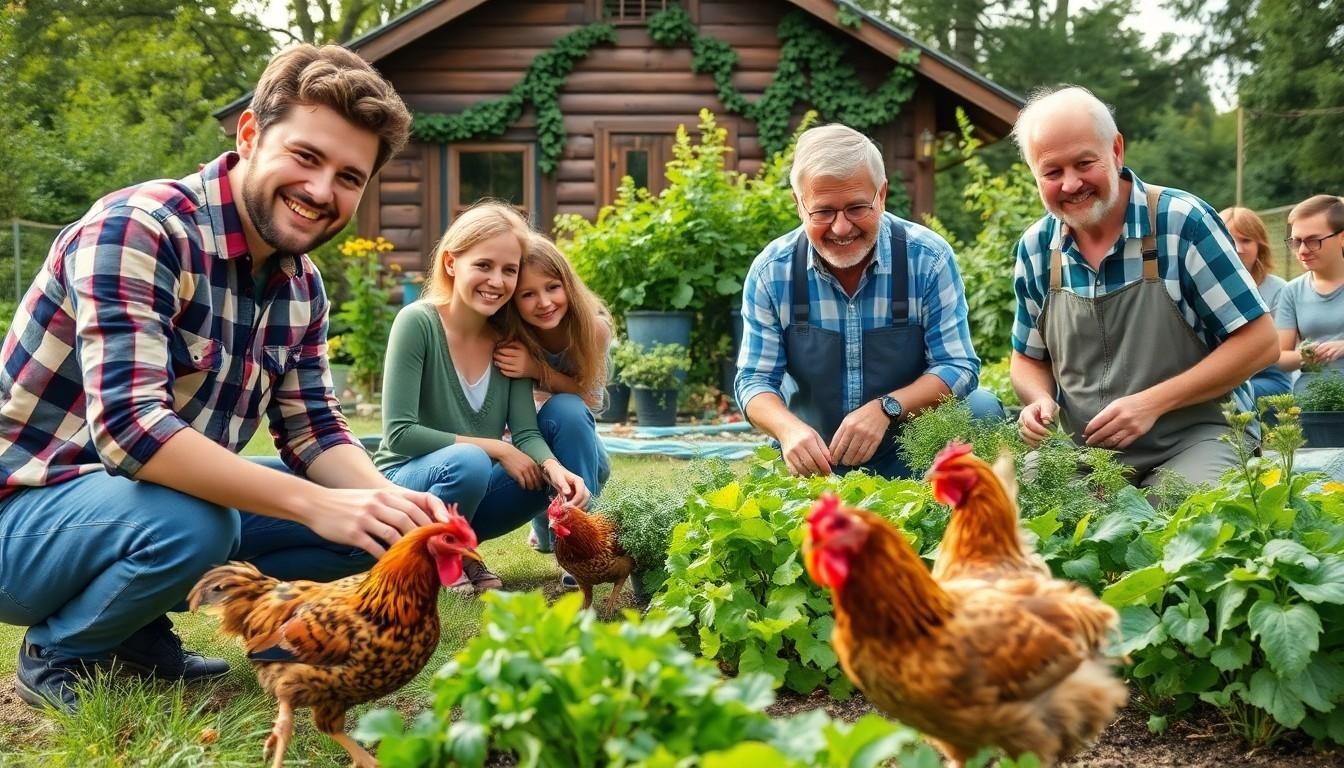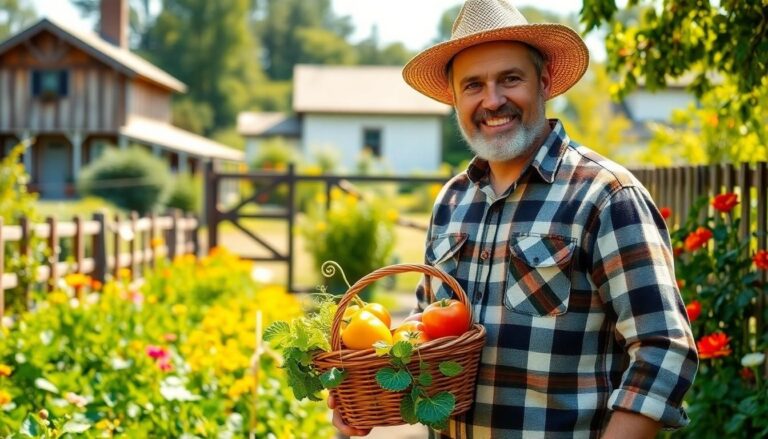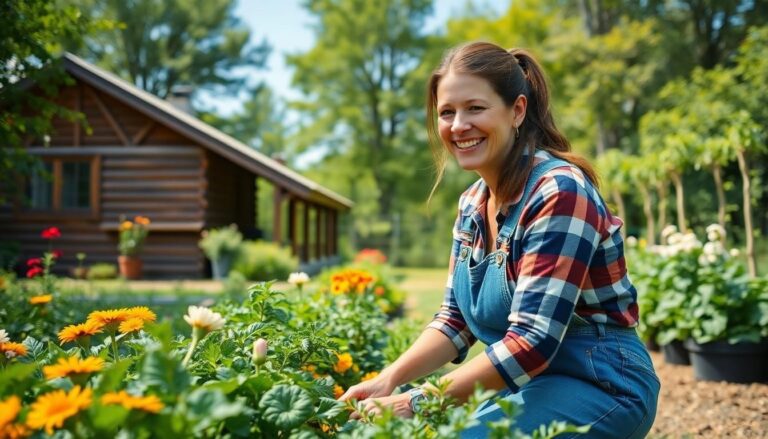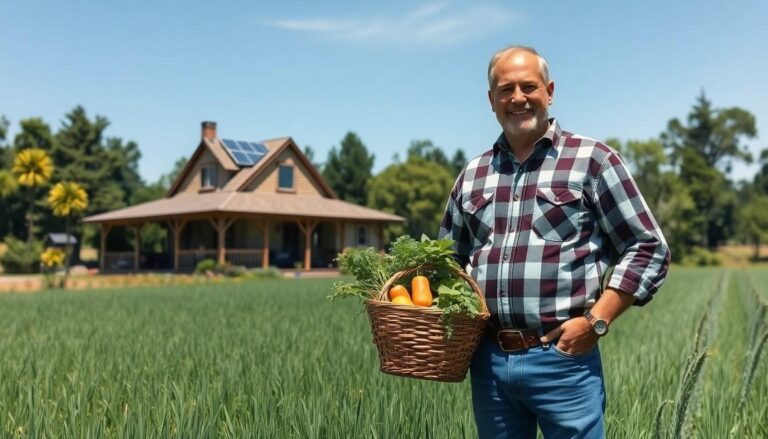In a world where grocery store trips can feel like a scavenger hunt and Wi-Fi signals seem more reliable than fresh produce, homesteading is making a comeback. Picture this: a cozy cabin, chickens clucking in the yard, and a garden bursting with veggies—sounds like a Pinterest board come to life, right? Today’s homesteaders are redefining self-sufficiency, blending the charm of rural living with a sprinkle of modern flair.
Homesteading Today
Homesteading today blends traditional self-sufficiency with modern sustainability practices. Many individuals seek to reduce their reliance on commercial food sources. Cozy cabins and flourishing gardens embody this lifestyle, emphasizing self-reliance. Backyard chickens, goats, and bees populate many homesteads, providing fresh eggs, milk, and honey.
Environmental concerns drive the popularity of homesteading. Gardeners embrace organic methods, avoiding pesticides and chemicals. Communities prioritize local food systems, helping them establish connections with nearby farms and markets. Diverse crops and heirloom seeds promote food diversity and resilience against climate change.
Skills essential to homesteading include gardening, animal husbandry, and food preservation. People are learning to can fruits and vegetables or make their own bread and cheese. Workshops and online courses make these valuable skills more accessible. Resource-sharing networks connect homesteaders, allowing them to share tools and knowledge.
Financial benefits also appeal to modern homesteaders. Many reduce monthly grocery bills by growing their own food. Some even sell excess produce or homemade goods at local markets. Additional income streams like agritourism increasingly attract attention.
In addition to practical benefits, homesteading fosters a sense of community. Homesteaders often collaborate on projects, share resources, and support one another. This shared experience deepens connections and enhances the quality of life.
Homesteading today represents a movement towards sustainability and self-sufficiency, adapting traditional practices to meet modern needs. It challenges individuals to rethink lifestyle choices and emphasizes the importance of community and environmental stewardship.
The Rise of Homesteading
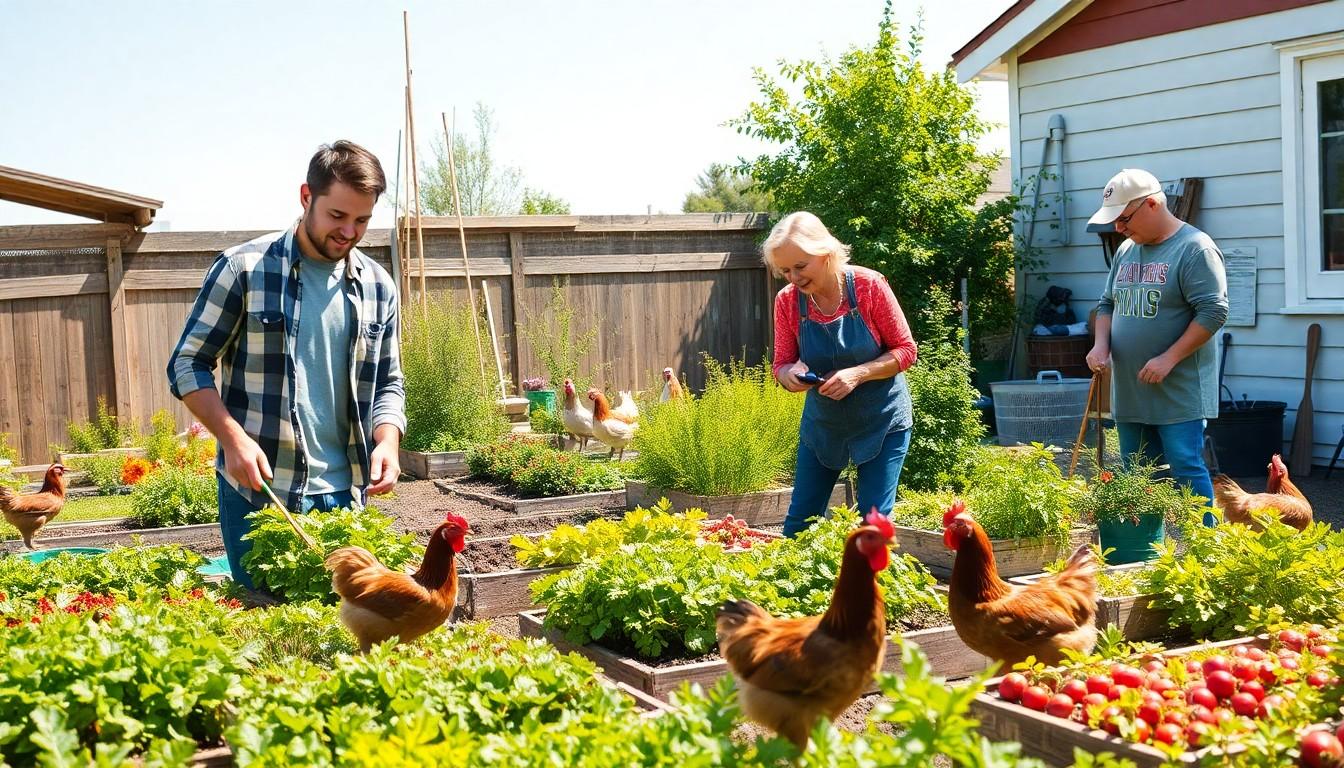
Homesteading is experiencing a significant resurgence in contemporary society. This lifestyle merges traditional self-sufficiency with modern sustainability practices.
Reasons Behind the Trend
Financial concerns drive many individuals toward homesteading. Grocery prices increase, prompting a search for cost-effective food sources. Organic gardening captures attention, offering health benefits and reduced reliance on commercial products. Workshops and online courses make learning essential skills accessible. Environmental awareness also plays a role, as people seek to minimize their carbon footprint. Community building is emphasized, with many collaborating on projects and sharing resources. Opportunities for selling excess produce attract those looking for supplementary income.
Demographics of Modern Homesteaders
Demographics of modern homesteaders are diverse. Young families often embrace this lifestyle in search of sustainability. Many retirees also find solace in homesteading, favoring a slower pace of life. Urban dwellers increasingly adopt backyard gardening and small-scale livestock practices. Individuals of various ages appreciate the shift toward self-sufficiency and environmental stewardship. Gender representation includes both men and women, though women often lead in community initiatives. Geographic locations vary widely, from rural areas to suburban neighborhoods. This diversity enriches the homesteading movement, fostering unique perspectives and practices.
Essential Skills for Homesteading
Essential skills for homesteading provide the foundation for self-sufficiency. Mastering these skills enhances an individual’s ability to thrive in a homesteading lifestyle.
Gardening and Food Production
Effective gardening and food production stand central to successful homesteading. Knowledge of organic gardening methods promotes healthy crops. Familiarity with crop rotation and companion planting can increase yields. Utilizing heirloom seeds ensures a diverse and resilient garden. Understanding soil health improves nutrient availability, supporting plant growth. Seasonal planning allows for continuous harvests and food preservation opportunities. Employing techniques such as raised beds and container gardening makes efficient use of limited space. With access to workshops and online courses, aspiring homesteaders find resources to expand their gardening expertise.
Animal Husbandry Basics
Animal husbandry basics play an important role in maintaining a productive homestead. Keeping chickens for eggs provides a reliable food source. Understanding proper nutrition for livestock ensures their health and productivity. Familiarity with shelter requirements and space needs increases animal welfare. Rotational grazing systems promote land regeneration and enhance soil quality. Learning about common animal breeds helps in selecting the right animals for specific climates and purposes. Applying principles of animal husbandry enables effective management of stress and disease prevention. With careful planning and research, managing farm animals becomes a rewarding aspect of the homesteading experience.
Sustainable Living Practices
Sustainable living practices play a crucial role in modern homesteading. Many homesteaders prioritize renewable energy options and waste management solutions.
Renewable Energy Options
Utilizing solar power becomes increasingly popular among homesteaders. Solar panels can provide electricity for various needs, reducing dependence on local grids. Wind energy offers another viable option, especially in areas with consistent wind patterns. Generating power on-site minimizes carbon footprints and lowers energy costs. Additionally, some homesteaders invest in micro-hydropower systems when moving water is available. These renewable options contribute to a self-sufficient lifestyle, promoting eco-friendly energy consumption.
Waste Management Solutions
Implementing effective waste management solutions is vital for homesteaders. Composting organic waste not only reduces landfill contributions but also enriches soil health. Many homesteaders choose to separate recyclable materials to minimize environmental impact. Utilizing vermiculture, or worm composting, transforms kitchen scraps into nutrient-dense soil amendments. Encouraging a culture of repurposing, various materials can find new uses instead of being discarded. These practical waste management strategies embrace sustainability while enhancing homestead efficiency.
Challenges of Homesteading Today
Homesteading presents various challenges that modern practitioners confront daily. These hurdles include climate change impacts and economic factors, both of which significantly influence homesteading success.
Climate Change Impacts
Shifting weather patterns create unpredictability in growing seasons and harvests. Increased temperatures and extreme weather events, such as floods and droughts, threaten crop yields and livestock health. Gardeners often face pest and disease issues that alter more quickly due to changing climates. Water scarcity further complicates sustainable practices, as many rely on rainwater collection or wells for irrigation. Adapting to climate change demands flexibility and resilience from homesteaders willing to embrace new methods.
Economic Factors
Rising costs of supplies challenge many homesteaders. Property taxes and utility bills often consume a significant portion of budgets, straining resources. Inflation drives prices of seeds, tools, and livestock feed higher, making self-sufficiency harder to achieve. Economic downturns can limit access to markets for selling surplus produce, impacting income generation. Financial independence creates urgency for homesteaders to find creative solutions to maintain sustainability and self-sufficiency amidst economic uncertainties.

